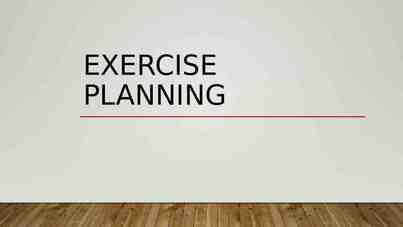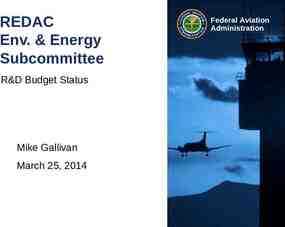Ego State Theory Objectives To understand and critically evaluate the
25 Slides1,018.00 KB
Ego State Theory Objectives To understand and critically evaluate the structural model of ego states. To understand and critically evaluate the functional model of ego states. To relate the ego state model of TA to assessment and diagnosis. To critically evaluate the theoretical concept of ego states in clinical practice. Not to be reproduced without permission from the Ellesmere Centre
TAJ Articles & Other Reading Please refer to core handbook for the list of TAJ articles and other reading material for ego state theory. Not to be reproduced without permission from the Ellesmere Centre
What is an Ego State? An entire system of thoughts feelings and behaviours that make up our personality at a given time. Definition A consistent pattern of feeling and experience directly related to a corresponding consistent pattern of behaviour. Berne 1966 i.e. each ego state is defined by a combination of feelings and experience that consistently occurs together. Not to be reproduced without permission from the Ellesmere Centre
Ego States The three part ego state model of personality is at the heart of TA theory. It is demonstrated as three stacked circles. There is an imaginary outer skin that encloses the three circles which indicates how they all function as a unit to form one personality. Ego states are neural networks of associated responses. The networks form an ego state structure that operates part conscious and part unconscious. Conscious is observed as a distinct ego state, unconscious is thought of as a relational unit operating behind the scenes. Schiff 1981 Not to be reproduced without permission from the Ellesmere Centre P A C
3 Pragmatic Absolutes & Corresponding Hypotheses (Berne 1961) Every grown up individual was once a child Relics of childhood survive into later life as complete ego states 2 Every human being with sufficient functioning brain tissue is potentially capable of adequate reality testing Reality testing is a function of discrete ego states and not an isolated ‘capacity’ 3 Every individual who survives into adult life has had either functioning parents or someone in loco parentis The executive may be taken over by the complete ego state of an outside individual as perceived. 1 Not to be reproduced without permission from the Ellesmere Centre
Ego States There are two basic models of Ego states, Structural & Functional Structural – Content Functional - Process Not to be reproduced without permission from the Ellesmere Centre
Structural Model of Ego States – 1st Order The structural model of ego states shows the content of the ego state system. The three ego states all consist of a set of related behaviour patterns and feelings. Organises internal and external stimuli. P Parent Ego State. Behaviours, thoughts & feelings copied from parent figures. Adult Ego State Behaviour, thoughts & feelings which are direct responses to the A here and now. C Child Ego State Behaviours, thoughts & feelings replayed from childhood. Not to be reproduced without permission from the Ellesmere Centre
2nd Order Structural Model - Parent Ego State P2 A collection of attitudes, thoughts and behaviours introjected or copied from external parental figures. Seek to enforce borrowed set of rules / standards P2 P3 P3 – The Parent ego state of an actual parent / authority figure. Commands / Slogans You must always do your best A3 A3 - The Adult ego state of an actual parent / authority figure. Reason given for the message / slogan. Its hard to get a good job without a good education these days C3 C3 – The Child ego state of an actual parent / authority figure. Implication of the message held by the Parental figures Child ego state. You will amount to nothing Not to be reproduced without permission from the Ellesmere Centre
2nd Order Structural Model – Child Ego State P1 P1 Fantasy about what will happen if the message is / isn’t followed (rejection/annihilation) If I don’t work hard, mother wont love me A1 Childs attempts to make sense of the world, self & others based on his C1 experiences / relationships. I am going to be really good and get things right C2 A1 C1 P0 A0 C0 C1 Somatic experience e.g. scare in response to the fantasy I wont survive without mother Sense of self. The greater the deficit in parenting the more excluded C1 will be. Not to be reproduced without permission from the Ellesmere Centre
3rd Order Structure – Child Ego State P0 C1 A0 C0 P0 – Infants internalised experience of mother (object) How to get needs met A0 – Cohesive and healthy sense of self develops in response to attuned interplay between infants potential and parents responses Instinctive problem solving C0 – Innate sense of yearning. The felt sense of being contacted and affected by the environment (object). C0 forms the ‘foundation’ of relational needs that form the core self. Not to be reproduced without permission from the Ellesmere Centre
Building the Structure of the Personality P3 P2 P3 – Parent in the Parent. Set of slogans/commands. Generational message. Tend to have conscious awareness of the messages. A3 - Collection of statements about reality heard from parental figures / reason given C3 – Covert message – Child’s perception of the implication held by the Parental figures Child ego state. A3 C3 A2 P1 C2 A1 C1 PO A0 C0 A2 – Reality Testing. Evidence seen as a child with our own Adult as to why we should/shouldn’t comply with the message. Our own thinking about the message becomes part of our A2 content. Evaluates the contents of Parent & Child. P1 – The rules that need to be followed. Magical thinking. Fantasy formed - what will happen if we disobey the P3 message. A1 – Early decision in response to the message - what we do in response to the fantasy, i.e. best way to deal with the situation. Contains the whole collection of strategies the child has available for problem solving. C1 –Stored memories and associated feelings in response to our fantasy P0 Internalisation of object/environment A0 Part of self / identity Not to be reproduced without permission from the Ellesmere Centre
Development of Ego States P1 aged 3 & 6 based on magical thinking and operates with intuition and feeling (magical parent) can use fantasy / fear to force an adaptation i.e. if adequate external structure isn’t supplied how fantasy can be used to create. A1 develops between 18 months and 3 years, operates on intuition and feeling that is ingenious and creative (little professor) C1 The child ego state that exists from conception. The original part of the personality between birth and 6 months. Consists of an innate structure the child is born with that operates with instinct P0 –Instinctive programming of how to get needs met A0 – Instinctive problem solving C0 – Instinctive preferences. P2/A2/C2 - The Parent, Adult, Child ego state of the grown up. Formed between age of 5 – 20 years as a result of even more external stimuli from their authority of caretaker figures. Not to be reproduced without permission from the Ellesmere Centre
Functional Model. The functional model, divides the ego-states to show us how we use them, when considering the functional model we observe how people express their ego-states, their observable behaviour. Not to be reproduced without permission from the Ellesmere Centre
The Functional Model of Ego States - - Controlling Parent (CP) - Prejudice, controlling, put downs Behaviours promoting observation of rules, should and musts. Fault finding Protective, promotes well-being CP NP Nurturing Parent (NP) Caring with genuine regard for others - Smothering / interfering, help given from a place which discounts others ability Adult Adapted Child Social relating, learns how to socially adapt to the world, conforms. Overly concerned with others, fitting in with their expectations, timid, anxious. (The adapted child is an aspect of the Child which has moulded itself to the parent) Adult AC FC Natural Child (Free Child – FC) Express emotion in a safe way - Uncensored child emotions There were times in my childhood when I behaved in ways that were independent of parental pressures. At these times, I was simply acting as I myself wanted to. When I am behaving in behave in these uncensored childhood ways, I am said to be in Free Child. Not to be reproduced without permission from the Ellesmere Centre
Ego State Characteristics Controlling Parent Nurturing Parent Words Should, must, don't, good, bad Tones Harsh, abrupt, authorative Clues from Gestures / mannerism s Free Child Adapted Child Don't worry, let How, when, me help you, where, I there there understand I wish, wow, love hate Please, sorry, I can't, try Soothing, consoling, loving Calm, clear, even Joyful, noisy, energetic complaining, surely, monotone Level eye contact, absence of fidgeting Exaggerated movements, uninhibited Head tilted to one side, fidgeting, slouching Bright-eyes, smiling freely Pouting, downcast, not engaged Finger Pat on arm, pointing, arms nodding crossed encouragingly Adult Rolling eyes, Facial furrowed Smiling, proud Open, expressions brow, eyes thoughtful Not to be reproduced without permission from the scowlingEllesmere Centre
Options Stephen Karpman Locked transactions. Aim is to recognise options available to us, i.e. we can respond to a given transaction from any one of our 5 ego states. Example of locked transaction, (which can proceed indefinitely) Child - Parent – I hate you! Parent – Child – You are naughty! Child – Parent – No I’m not, you are! Parent – Child – Stop being cheeky, behave! Transactions unless crossed would remain locked and everything remains a variation of a Child statement. The others person's responses, no matter how "reasonable" sounding, were all variations of Parent statements. Not to be reproduced without permission from the Ellesmere Centre
Diagnosis of Ego States Berne suggests four ways to identify from which ego state a person is transacting. Behavioural Social Historical Phenomenological Not to be reproduced without permission from the Ellesmere Centre
Behavioural diagnosis Observing the demeanour, gestures, body posture, voice tone, vocabulary and facial expression provides us with the clues to which ego state a persons in. Not to be reproduced without permission from the Ellesmere Centre
Social diagnosis Our reaction to the person being diagnosed gives us the social diagnosis. Our response will generally be indicative of the ego state that is presented. A response to a controlling Parent would be to feel scared and childlike Not to be reproduced without permission from the Ellesmere Centre
Historical diagnosis How things actually were – asking – “Were your parents actually like that?” Checking the origins of the observed behaviour, feelings and thinking with the individual. Explore memories and past experiences. The diagnosis will be clearer if verified by the person. e.g. i.e. Does your behaviour, thinking and feeling remind you of anyone in your childhood. Yes, I remind myself of my dad' (historical diagnosis as Parent). To make a historical diagnosis, we look for process and content. When someone displays a certain behaviour in words, tone, gesture, posture and facial expressions, usually a combination of all 5 we could ask how they perceive the behaviour they are displaying i.e. are they replaying behaviours from childhood or copied behaviours from their parent. Not to be reproduced without permission from the Ellesmere Centre
Phenomenological diagnosis Re-experiencing somatically earlier events – the person experiences themselves as a young child or parent. The subjective experience of reliving the original event. Re-experiencing the whole ego state, in its full intensity. Eric Berne wrote ' .phenomenological validation only occurs.if the individual can re-experience the whole ego state in full intensity with little weathering.' this is completely re-experiencing the past instead of just remembering it. Along with the memory comes the emotions, thoughts and behaviour which can be discussed and observed in order to establish a diagnosis Not to be reproduced without permission from the Ellesmere Centre
Functional fluency (Susannah Temple 1999) Functional fluency is proposed as a term to describe the behavioural manifestations of the integrating Adult ego state. Functional fluency means increasing awareness and choice about avoiding negative, Parent or Child contaminated behaviours and instead, responding with positive options more likely to invite similarly positive responses, it describes the manifestations of the integrated Adult ego state. Susannah temple believed that the integrated Adult refers to an ideal. She reminds us of Berne’s acceptance of humanity and we all have frailties and susceptibilities so will never reach this ideal totally. She uses the more appropriate and realistic term “integrating Adult”. This highlights the fact that Adult decontamination and integration is an ongoing, dynamic process. Not to be reproduced without permission from the Ellesmere Centre
Functional Fluency Not to be reproduced without permission from the Ellesmere Centre
Bernes Energy Theory Like Freud, Berne theorised that we have a psychic energy or cathexis. Berne said that we have a certain amount of energy held within our bound red ego-states and that it is possible for the energy to move from one ego-state to another. He named 3 types of energy. Bound energy – Unused potential energy resident in an ego-state. Unbound energy – Energy moving within an ego-state however involuntarily, unknowingly or without wanting to, it could be said to be 'out of control'. Free energy – As its name suggests, free energy is the wilful flow of energy from one ego-state to another. (NB this theory will be revisited in a later teach) Not to be reproduced without permission from the Ellesmere Centre
Executive & Real Self Executive 'Berne hypothesized that an ego-state will take over executive power when it is the one in which the sum of unbound free cathexis (i.e. active cathexis) is greatest at a given moment.' (taken from TA Today) Real Self 'The ego-state experienced as real Self will be the one which at a particular moment has the greatest amount of free cathexis' (taken from TA Today) In summary, free energy (cathexis) can move freely from one ego-state to another as and when desired in addition each ego-state holds its own amount of unused, potential, bound energy when that bound energy comes into use it is converted into unbound energy (cathexis). By way of some clarification on energy theory, Charles Darwin said ' The purpose of emotion is to effect movement to bring about homoeostasis. (NB this theory will be revisited inNot a later teach) to be reproduced without permission from the Ellesmere Centre






























